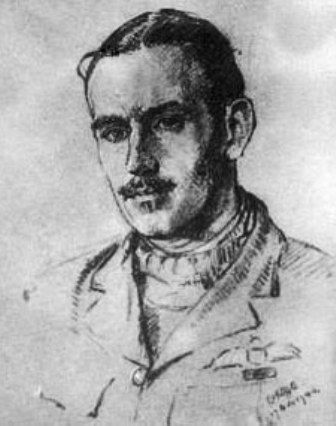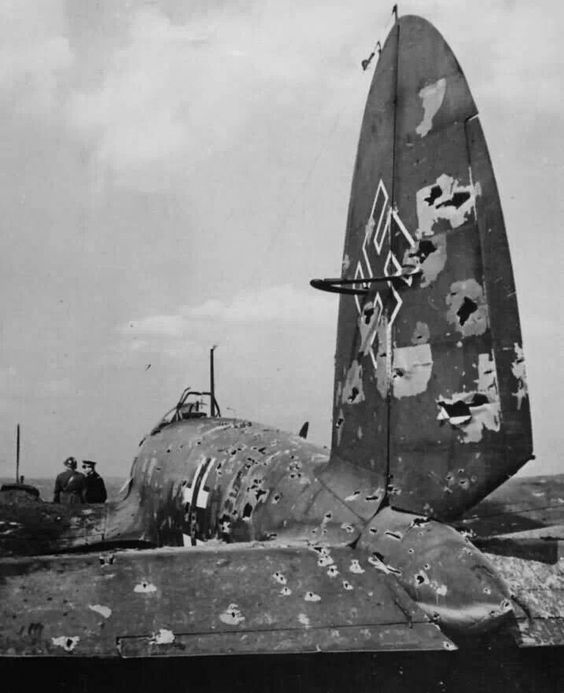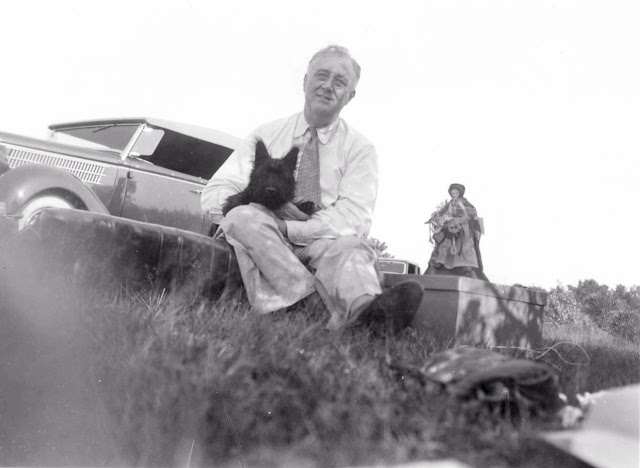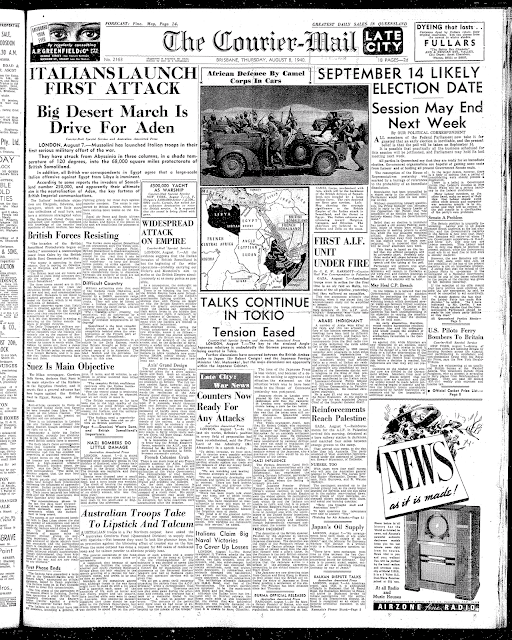Thursday 20 August 1940
The gratitude of every home in our Island, in our Empire, and indeed throughout the world, except in the abodes of the guilty, goes out to the British airmen who, undaunted by odds, unwearied in their constant challenge and mortal danger, are turning the tide of the world war by their prowess and by their devotion. Never in the field of human conflict was so much owed by so many to so few."The Few" remains the motto of the RAF to this day, so the speech had a lasting impact upon the service itself.
Of course, the Battle of Britain isn't quite over yet, so it is a bit early to be taking victory laps. However, the historical record in hindsight makes this a fitting occasion to make such a speech.
The debate after the speech makes interesting reading because there is some satisfaction expressed about the warlike tone constantly struck by Churchill, the apparent absence of any interest whatsoever in peace negotiations of any sort, and the "slanderous anti-Soviet propaganda" being (apparently) supported by the government. This is an interesting position in many ways, but particularly due to what we now know was about to happen to London.
Churchill also announces the agreement with the US to trade bases for destroyers. The bases will be in Newfoundland and the West Indies.
Battle of Britain: The weather - England's second-best ally in the battle following the assistance of the United States - once again turns foul and hinders operations. Great Britain merely has to run out the clock before the weather really closes in, while the Luftwaffe must get things done in a hurry if its aerial offensive is to have any meaning at all.
There is not much going on aside from reconnaissance until shortly before noon when Bf 110s from Epr.Gr 210 operates around Southwold, including attacking shipping and RAF Martlesham Heath. RAF No. 66 Squadron intervenes and chases them off.
At 13:45, Dornier Do 17s come across the North Sea and are met by RAF No. Squadron. 242, which loses a Hurricane.
Other Dornier Do 17 bombers attack RAF Eastchurch at 14:30. RAF No. 615 Squadron intervenes, joined by RAF No. 65 Squadron, which loses a Spitfire.
An hour or so later, the Luftwaffe launches another attack on RAF Manston. RAF No. 600 Squadron sends its Blenheims up in defense, one of which is damaged. The airfield is lightly damaged. A dogfight occurs between the escorting fighters and RAF No. 65 Squadron which forces a Spitfire to crash-land and ultimately be written off.
The 8 storage tanks at Llanreath near Pembroke Docks are still burning from the raid of the 19th, and the fire, in fact, is spreading to another two tanks, creating a massive inferno. This serves as a beacon visible for many miles, attracting more Luftwaffe attacks. RAF No. 236 Squadron sends up Blenheims, one of which is damaged.
There are a few lone-raider missions. One, on RAF Thornaby, results in the loss of a Junkers Ju uu to RAF No. 302 (Polish) Squadron. In addition, a Hurricane of RAF No. 257 Squadron downs a Dornier off Suffolk.
The day is notable because it marks the first time a Luftwaffe crew is interned in Ireland and only the second plane to crash there. It is a long-range Luftwaffe Focke Wulf FW 200C-1 Condor, coded "F8+KH" and assigned to I./KG 40. The anti-aircraft fire brought it down on Mount Brandon during a reconnaissance mission. The incident is unusual in Ireland and long-remembered - the Irish (in general) have no particular personal grudge against the Germans.
The Luftwaffe sinks 248-ton minesweeper trawler HMS Resparko at Falmouth. Everyone survives.
Three Luftwaffe bombers attack RMS St. Patrick off of South Wexford, damaging it. In other attacks on the west coast of Ireland, the Luftwaffe damages British freighter Macville at Blacksod Bay and British freighter Peebles 20 miles off Tuskar Rock.
The Luftwaffe stages a small raid on Scapa Flow in the North of Scotland shortly after midnight.
RAF Coastal Command spots a couple of Kriegsmarine destroyers in the North Sea and damage one.
Losses for the day are light, with Luftwaffe losses usually given as 10-15 planes and RAF losses at 3-5 planes.
Luftwaffe Staffelkapitän of 5./JG 51, Hptm. Horst Tietzen, who perished on 18 August, posthumously receives the Ritterkreuz (Knight's Cross of the Iron Cross). Theodor Osterkamp, the commanding officer of Jagdgeschwader 51, also receives the award and is there to receive it. Osterkamp is a fascinating figure because he also fought in World War I and received top awards then as well, including the highly coveted "Blue Max" (Pour le Mérite). The Luftwaffe is very protective of some of its top war heroes and orders Osterkamp to stop flying missions.
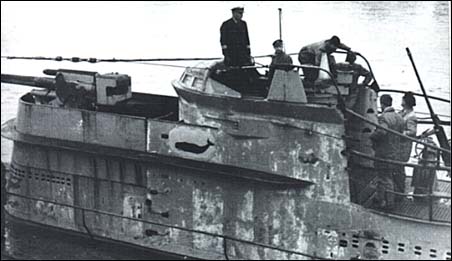 |
| U-A, a submarine ordered by Turkey (as the Batiray) from Germaniawerft and requisitioned by the Kriegsmarine on the outbreak of war. |
U-46 (Oberleutnant zur See Engelbert Endrass) torpedoes 2089 ton Greek wood freighter Leonida M. Valmas in the Western Approaches. Perhaps due to the light cargo, the freighter does not sink right away and is taken under tow, to Kames Bay, where the cargo salvaged and the ship declared a total loss.
Royal Navy submarine HMS Cachalot torpedoes and sinks U-51 (Kapitänleutnant Dietrich Knorr) in the Bay of Biscay 100 miles off of the base at St. Nazaire. All 43 crew perish. The U-boat route to the Atlantic from the French bases is a prime hunting ground for British forces.
British raider Widder sinks British freighter Anglo Saxon.
The British minelayers HMS Teviotbank, Plover, and Willem van der Zaan lay minefield BS 33 in the North Sea.
A floating dock (AFD.12) departs the Tyne for Lyness under escort by destroyers HMS Lowestoft and Egret.
Convoy FN 258 departs from Southend, Convoy MT 146 departs from Methil, Convoy FS 258 departs from the Tyne,, Convoy OB 201 departs from Liverpool, Convoy HG 67 departs from Halifax.
German destroyer Z28 is launched, U-141 is commissioned, and hospital ship Alexander von Humboldt is commissioned. British minesweeping trawler HMS Almond (T 14, Chief Skipper Robert Buchan) is commissioned.
Battle of the Mediterranean: The RAF bombs Diredawa and Dessie in Abyssinia and Kassala in eastern Sudan.
Taking a cue from Hitler's decision a few days ago to institute a "total blockade" of Great Britain, Italy institutes its own "total blockade" of Gibraltar, Malta, and Egypt. While it is a fanciful idea in many ways, Malta already is blockaded, and Egypt potentially could face a blockade due to the recent Italian conquest of British Somaliland. The timing of this announcement, though, reinforces the image of the Italian tail wagging on the German dog.
Vice Admiral James Somerville arrives in Gibraltar with his flotilla headed by aircraft carrier Ark Royal and battlecruiser HMS Renown. They have been in Great Britain for home defense. This reconstitutes Force H. Italian bombers attack Gibraltar to no effect.
At Malta, half a dozen more Blenheim bombers land at Luqa, while three others continue their journey to Egypt. The Italians naturally take an interest in all this bomber activity and decide to pay a visit as well. There are air raids on Luqa airfield which destroy several buildings and destroy one of the bombers and damage a couple of others. There also are some attacks on the Hal Far airfield which damage an RAF No. 830 Squadron Swordfish torpedo bomber.
 |
| Admiral James Somerville (1882–1949) on the right. |
The Komet, meanwhile, now is being led eastward in the Arctic ocean by Soviet icebreakers. When - or if - it will make it to the Pacific Ocean is unclear.
The New Zealanders and Australians send ships out to hunt down German raiders, but it is a big ocean. The Orion remains in the area of the sinking for five hours to save the survivors from an otherwise almost certain death despite the likelihood of the British ships' arrival.
German Government: Generalmajor Walter Warlimont, deputy chief in the Oberkommando der Wehrmacht (OKW), and his staff present a revised plan for Operation Felix, the proposed invasion of Gibraltar. The plan concludes with the obvious, that everything depends upon Spanish participation, and that is far from certain. Franco wants to have it both ways, appearing to be against the whole thing while actually supporting it - but absent a declaration of war on Great Britain. Clearly, Franco does not want to enter another general war so soon after winning the Spanish Civil War.
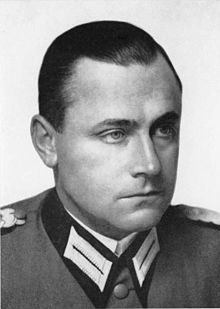 |
| Walter Warlimont. |
China: The Japanese continue their bombing campaign against Chungking. The cumulative effect of the raids is devastating to the Nationalist capital. The new Zero fighters continue escorting the "Nell" bombers, which they began doing only yesterday.
Chinese communists operating in Hebei and Shanxi Provinces launch the "Hundred Regiments Offensive." The attack is focused along the railway line that separates them from the Japanese. The provinces are a major source of supply for the Japanese.
August 1940
August 1, 1940: Two RN Subs Lost
August 2, 1940: Operation Hurry
August 3, 1940: Italians Attack British Somaliland
August 4, 1940: Dueling Legends in the US
August 5, 1940: First Plan for Barbarossa
August 6, 1940: Wipe Out The RAF
August 7, 1940: Burning Oil Plants
August 8, 1940: True Start of Battle of Britain
August 9, 1940: Aufbau Ost
August 10, 1940: Romania Clamps Down On Jews
August 11, 1940: Huge Aerial Losses
August 12, 1940: Attacks on Radar
August 13, 1940: Adler Tag
August 14, 1940: Sir Henry's Mission
August 15, 1940: Luftwaffe's Black Thursday
August 16, 1940: Wolfpack Time
August 17, 1940: Blockade of Britain
August 18, 1940: The Hardest Day
August 19, 1940: Enter The Zero
August 20, 1940: So Much Owed By So Many
August 21, 1940: Anglo Saxon Incident
August 22, 1940: Hellfire Corner
August 23, 1940: Seaplanes Attack
August 24, 1940: Slippery Slope
August 25, 1940: RAF Bombs Berlin
August 26, 1940: Troops Moved for Barbarossa
August 27, 1940: Air Base in Iceland
August 28, 1940: Call Me Meyer
August 29, 1940: Schepke's Big Day
August 30, 1940: RAF's Bad Day
August 31, 1940: Texel Disaster
2020




